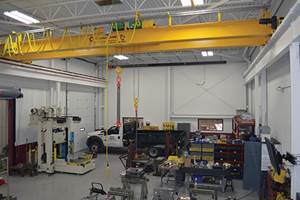The Value of a Customer
Value is as much about the ancillary costs to you as the revenue you get from the customer.
Share
One of my colleagues recently asked me who my most important customer was and I instinctively said “all of them.” Hopefully, you have gotten the message about the importance of loving your customer from reading my column, but there is a different question posed here. What is the actual value of each of your customers? Assessing value in a business relationship is subjective—it should not always be simply defined. Value is as much about the ancillary costs to you as the revenue you get from the customer.
One of the mistakes I see job shops often make is labeling a customer based on their first interaction or their first order. Think about your largest customer, how big was their first order? More often than not, their first order with you was a test, to make sure that the entire process would run smoothly, that they were getting quality parts at a good price and delivered in a timely fashion. Once you passed that test, they were willing to give you more of their work and they were placing larger orders on a monthly basis, and not just single part runs.
There are a few ways to look at the value of a customer. It’s not a number because what figure would you place on a happy customer? Forgetting about their size, and how much business they do with you per month, happy customers can provide many positive attributes. First, they are exactly the type of customer you want to utilize on reference calls. They can talk in glowing terms about how you have worked well together and they can help answer questions from a customer standpoint, so your prospect doesn’t feel like they are getting the real sales pitch. Secondly, if they understand the process of how your shop works and are not tying you up on the phone or on e-mail, that value is found in freeing up your resources to get more work done, get more new customers in the door and have a life outside the shop.
Some customers while variably profitable for your business are simply too difficult to keep. They may cause your business to spend unaccountable but significant resources on them, indirectly cutting into profits and negatively affecting the overall efficiencies of the business to serve other clients. In that case, navigating away from a low-value customer by nurturing new business may be in order.
Another way to measure a customer’s value is based on potential. All good customers have potential, but customers inside an OEM have more value based on the open door theory. Once you get your foot in the door at a large company, and prove yourself, it makes it easier to get noticed by others in the company. If you are working with a buyer for molded parts, you can take a reasonable guess that they need someone for production tooling or other processes based on the customer. These new opportunities raise the value of this customer, and increase your margin because your time is spent on one customer, instead of cold calling others.
The final way to look at value is the one discussion nobody wants to have. What would it mean to lose a customer? Understanding the loss in revenue is easy, but what else are you losing? Does this customer give you access into an industry that you otherwise are not involved? Is the customer simply too demanding of your time and resources? When you look past size and revenue and get to the real costs in time and money, you then have to make the decision on what it would take to get back a customer, and how many of them are worth that time and effort.
It is a good idea for mold shop owners to better understand what the true value of their customer is. By focusing on the dollars and resources consumed and not just the revenue, it will be easier to determine value, and help you build your shop with the type of customers that you want for the long term.
Related Content
OEE Monitoring System Addresses Root Cause of Machine Downtime
Unique sensor and patent-pending algorithm of the Amper machine analytics system measures current draw to quickly and inexpensively inform manufacturers which machines are down and why.
Read MoreThe Trifecta of Competitive Toolmaking
Process, technology and people form the foundations of the business philosophy in place at Eifel Mold & Engineering.
Read MoreTop 10 Topics to Cover During an ISO 9001 Manufacturing Audit
Take a look at this practical hands-on approach to conducting a quality audit.
Read MoreThink Safety: Eliminate Hazards Throughout the Shop
The tooling community is taking advantage of new products for safer mold shops and molding facilities.
Read More










